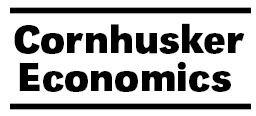Agricultural Economics, Department of

Cornhusker Economics
Date of this Version
2-20-2019
Document Type
Newsletter Issue
Citation
agecon.unl.edu/cornhuskereconomics
Abstract
Cow producers base major decisions such as calving season on expected economic outcomes which include productivity, input costs, personal capability, individual preferences, markets, and so on. Calving systems are generally categorized into three seasons, spring, summer and fall. Many producers select the spring calving season to maximize the weaned calf weight at the end of the summer grass season. Unfortunately this increases feeding costs since extra nutrition is needed in the spring, prior to pastures being opened. Also due to the widespread adoption of this early spring calving, the mass marketing in late fall often results in depressed calf prices relative to the rest of the year. Given these observations, efforts to reduce costs and increase prices have prompted more detailed investigations and research focused on moving the calving season to later in the year, such as May or June. While moving the calving season may decrease labor costs and alter market timing, it also changes the matchup between available pasture nutrition and the cow’s needed nutrition level, i.e. during lactation and the breeding season. Choosing the best calving time depends on the producers’ ability to understand their own operation by recognizing both the biological and economic impacts on their production and profitability.


Comments
Incorrectly dated February 20, 2018 on item.